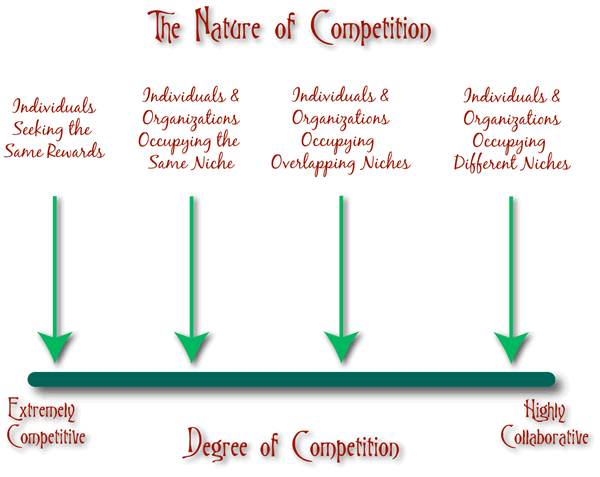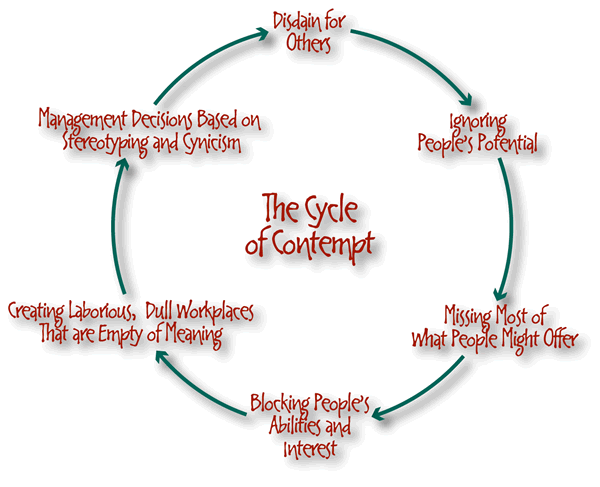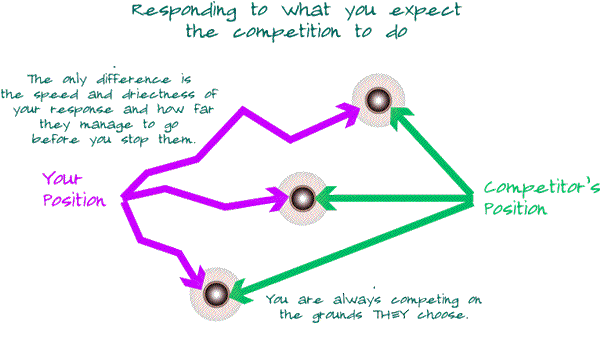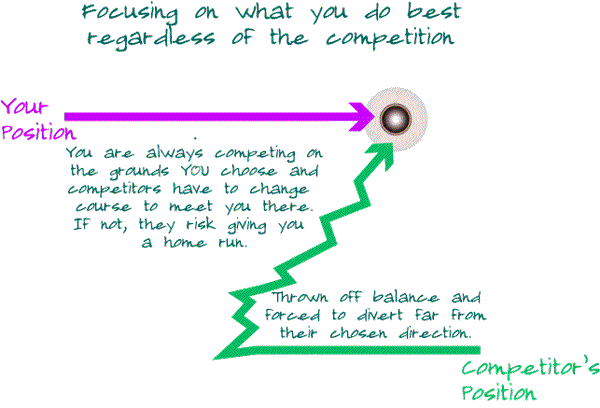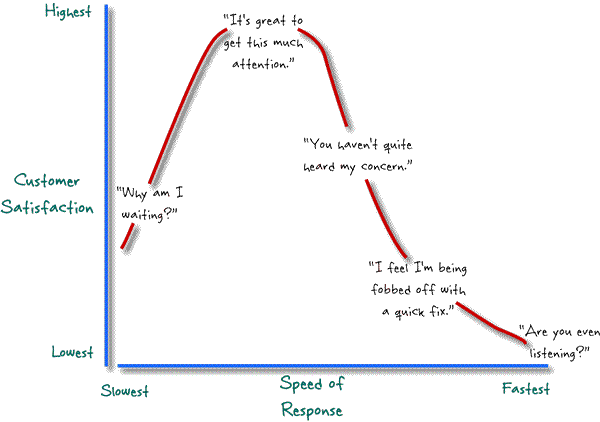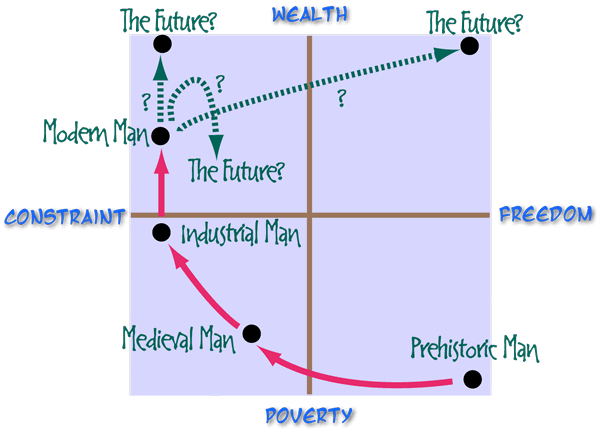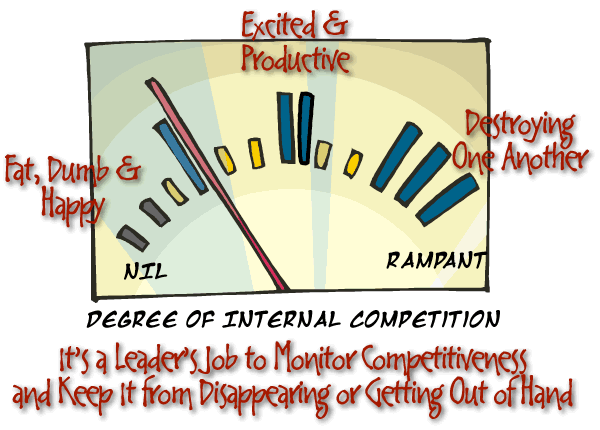Although today’s world is increasingly dependent on technology, the most prevalent approach to dealing with competitive pressure is based more on brute force. Organizations do not so much seek clever or technologically-advanced ways to produce more at lower cost as rely on old-fashioned hard work and long hours. By cutting staffing and forcing those who remain to work more to make up, they increase productivity in the simplest way possible.In time, this method of driving up collective productivity at the expense of work/life balance must produce diminishing returns. There are only so many hours any person can work, even if you ignore the effects on health, quality of output, and job satisfaction. What do organizations do then? Even after it becomes obvious that little additional productivity is available by further cuts in staffing and extensions of the typical working week, the brute force approach is not quite finished.
The First VariationIf no extra saving can be found through employing fewer people, they must be found elsewhere. Yet the approach organizations take usually remains focused on simple expedients, rather than significant changes in operation. Salaries are not the only costs associated with employment, so we are seeing increasing moves to reduce or eliminate fully-funded pensions, the cost of health care, and any other benefits that can be removed or restricted.
Cutting benefits naturally works best in industries and companies that used to be among the more generous, where rates were established long ago when good benefit schemes were seen as necessary for recruitment, or where union power was once strong enough to force employers to share more of their profits. Since employees resist benefits cuts, it only works where people can be persuaded the likely alternative is collapse and wholesale job losses, or where the bankruptcy courts allow employers to impose a form of “restructuring” that leaves such undesirable financial obligations behind. The U.S. airline industry led the way in cutting salaries and benefits for current employees. It has now been followed by a range of other corporations, many of them household names, looking to increase productivity and profits by stepping smartly away from past moments of unavoidable generosity.
The Second Stage
Not every corporation has benefits it can cut in this way. To reduce the cost of employment as a way of becoming more competitive, such businesses need a different approach. Since management orthodoxy is largely wedded to the brute force doctrine, the most common method is yet another variation on the same old theme of cutting financial outlay while seeking to extend working hours and output.
This time the answer comes from finding people willing to do the same work for less money, following the simple expedient of shifting the work overseas to lower-wage economies. As long as countries exist where there is a suitably educated and skilled workforce, combined with lower rates of pay and fewer costly benefits, this approach works well for the organization. Never mind the people at home who lose their jobs as a result, or the effect on the home country’s balance of payments. Modern technology makes the process easily possible and it saves costs and boosts profits. It must be good.
Extreme Options
Even outsourcing work on a large scale will one day reach the same problem of diminishing returns. Besides, it cannot work in industries such as utilities. While routine operations, such as so-called customer care, can be relocated to computer centers in India or elsewhere, the bulk of operations are more or less fixed in place. You cannot easily relocate a generating plant or a telephone network overseas, or tell customers to go to Mumbai to fill up on gas.
That is probably why these industries have appeared at the forefront of cases of creative accounting and other types of financial mismanagement. Denied the more obvious ways of using brute force to improve their quarterly figures, some stepped over the line of legality and began manipulating the figures themselves.
A Malignant Duo: Speed and Risk AvoidanceThe obvious question is why corporations do not seek
genuine productivity increases: those that come from working smarter, making better use of technology, or using human creativity to find better ways to compete. After all, these approaches to productivity have no obvious limits. Who knows what entirely new ways of doing things might become commonplace in ten, twenty, or fifty years?
Of course, organizations do seek such innovations, but less actively and with far lower levels of urgency. The culprits in the widespread crime of mugging employees for profit are those old criminals, speed and risk avoidance.
Though genuine productivity improvements occur all the time, they are not predictable, nor do they happen in a moment. A radically new way of operating may take time to work out and turn into an approach that runs smoothly and without hiccups. A new product line or business strategy can take years to make its way from concept to reliable profitability. What corporations want is a way to boost the next quarter's figures, not an approach that may produce far greater profits, but only in the long-term future. Since "long term" is typically defined as any time more than three or four years hence, the majority of truly innovative ways to increase productivity and competitiveness will fall into that category.
Innovation also carries risk. Many new ideas fail to work or provide the sales and profits their supporters claim at the outset. There is abundant evidence that creativity is impossible without accepting many failures along the way—failures that cost money and compromise the credibility of important people. Corporations, large and small, are by nature risk averse. They cling to the notion that it is somehow possible to invest and compete without taking on significant risks at the same time.
Need, Not GreedIt's tempting to attribute the excesses of today's corporate leaders to simple greed. While that has proved to be true in some cases, it cannot account for such a widespread attachment to brute force as the sole means of increasing productivity and profits.
What we are seeing is a generation of executives who spent their formative years in organizations where genuine productivity increases were fairly easily found through applying techniques we now take for granted: computerization, mechanization, and improved ways of organizing. It seemed so easy then that top managers and shareholders (who are, of course, mostly financial institutions) became addicted to the steady upward march of profits; and, like addicts the world over, believed their state of euphoria would last for ever.
As we reached the first signs of diminishing returns from the technological discoveries of the period between roughly 1950 and 1980, those same addicted shareholders and financial institutions refused to face “cold turkey” and return to less rapid, but more normal, rates of return. If anything, their demands increased, fueled in large part by the speculative bubbles of the 1990s. Even today, they are still dreaming of easy money and continuous double-figure rates of return on their investments.
Executives have to satisfy investors in some way, if only because it has become the fashion to tie their own salaries and job security to short-term increases in share price and profits. Hence the blind reliance on brute force: It’s the only quick, simple and previously surefire way to drive up shareholder returns and executive salaries at the same time.
As mothers have said to their children for uncounted generations, all this excitement and frenzy will be bound to end in tears. The only sustainable way to produce higher productivity is through innovation and invention. The only civilized way to use such gains is to increase wealth for everyone while keeping working hours and individual effort at the same level or, preferably, lowering them. Let us all hope that the tears, when they come, are neither too bad nor too lengthy, and that we can return to a civilized reliance on human creativity for our increases in productivity before too long.





